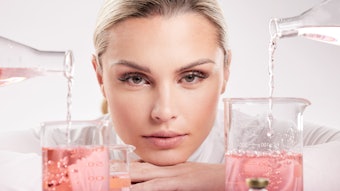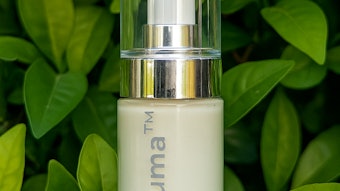
A recent analysis from Kline’s Elodie Alves points out that multifunctionality in beauty isn’t just a consumer-facing concepta. Yes, hybrid makeup-skin care products are on the rise, as are whole-body deodorants and combined hair/scalp products. But multifunctionality is also having an immense—and growing—impact on INCI lists. Multifunctional beauty ingredients can of course shorten those lists, which consumers love. They also support clean beauty principles that put a premium on cutting out excess materials—and can make formulations easier and cheaper to assemble and process. But how big of an impact is this movement having and which technologies offer opportunities for brands to take a less-is-more approach to innovation?
Beauty Formulations Are Getting Simpler
 The multifunctional beauty ingredient boom has boosted the popularity of moisturizing, conditioning and skin barrier-supporting emulsifiers; preservative boosters with moisturizing benefits; rheology modifiers that can moisturize or provide anti-inflammatory activity; and more.Sergey Ryzhov at Adobe Stock
The multifunctional beauty ingredient boom has boosted the popularity of moisturizing, conditioning and skin barrier-supporting emulsifiers; preservative boosters with moisturizing benefits; rheology modifiers that can moisturize or provide anti-inflammatory activity; and more.Sergey Ryzhov at Adobe Stock
To compare, a similar 2004 report found that adults on average used nine products daily, potentially exposing them to 126 individual ingredients.
The takeaway: formulations are becoming simpler, driven by a desire for simplicity, as well as the introduction of many multifunctional materials.
The Kline report explains, “This trend has led to growth in market demand for personal care products that provide various benefits, such as hydration, anti-oxidation, sun protection, etc. This trend is reflected across multiple ingredients. For example, among humectants, lactic acid benefits from its preservative properties, while glycolic acid offers excellent antioxidant properties. Both ingredients also have great exfoliation properties.”
That’s just the tip of the iceberg. Per the report, the multifunctional beauty ingredient boom has boosted the popularity of moisturizing, conditioning and skin barrier-supporting emulsifiers; preservative boosters with moisturizing benefits; rheology modifiers that can moisturize or provide anti-inflammatory activity; and more.
New Multifunctional Beauty Ingredients
This year has already witnessed a wide array of multifunctional ingredient launches.
Preservation & Multifunctionality
 Naama Eylon, CEO of Sharon Personal Care, says, “AquaVita goes beyond preservation and is truly multifunctional. It combines antimicrobial efficacy and clinically proven skin care benefits, such as reduced pigmentation, skin brightening and skin barrier strengthening.”Beauty Agent Studio at Adobe Stock
Naama Eylon, CEO of Sharon Personal Care, says, “AquaVita goes beyond preservation and is truly multifunctional. It combines antimicrobial efficacy and clinically proven skin care benefits, such as reduced pigmentation, skin brightening and skin barrier strengthening.”Beauty Agent Studio at Adobe Stock
The range is based on niacinamide (vitamin B3), enhanced to turn into a mild, green, safe and sustainable antimicrobial preservation solution, per the company. The result is a preservation platform that protects formulations and contributes to skin health.
AquaVita offers enhanced hydrophilicity, which boosts its effectiveness against microorganisms. Rather than solely impacting microorganisms’ outer layer, it disrupts their reproductive process, making it more effective at preventing their growth.
The platform is dermatologically tested for sensitive skin, is microbiome friendly and shows excellent antioxidant properties, per the company.
Currently, two ingredients have joined the line, including: Sharon AquaVita 90 (INCI: niacinamide, glyceryl caprylate, decylene glycol) and Sharon AquaVita 95 (INCI: niacinamide, polylysine).
Naama Eylon, CEO of Sharon Personal Care, says, “AquaVita goes beyond preservation and is truly multifunctional. It combines antimicrobial efficacy and clinically proven skin care benefits, such as reduced pigmentation, skin brightening and skin barrier strengthening.”
Elsewhere, Ashland’s Phyteq Raspberry Multifunctional is a preservative booster and acts as an antioxidant and free radical scavenger that defends elasticity of the skin.
Dual-action Pro-aging
BASF’s Hydrasensyl Glucan Green is designed to merge the benefits of hyaluronic acid and collagen in skin and sun care. This beta-glucan is reportedly capable of binding to large amounts of water in the skin, while its polysaccharide chains form a rope-like triple-helix similar to collagen. In formulations, Hydrasensyl Glucan Green offers skin smoothing and hydrating properties to soothe erythema. Key claims supported by the ingredient include a reduction in redness, resurfacing action, hydration and skin comfort.
A Soft-focus Emulsion Booster
Ingredion’s Farmal AF 1100 is an aluminum-free biodegradable polymer that can boost formulation viscosity while stabilizing emulsions. These benefits can improve product spreadability and coverage, per the supplier, while boosting pigment dispersion and offering a dry-to-the-touch sensory experience. At the same time, Farmal AF 1100’s light-scattering capabilities deliver a soft-focus, mattifying effect on-skin. The technology is reportedly applicable in sunscreens, deodorants, lotions, dry shampoo, color cosmetics and aerosolized products.
As this handful of examples shows, multifunctional technologies have the capacity to simplify formulations while enhancing performance across a wide range of functions and claims.
FOOTNOTES
ahttps://klinegroup.com/why-is-multi-functionality-demand-rising-in-the-personal-care-industry/
bwww.ewg.org/research/survey-finds-use-personal-care-products-2004-what-means-your-health










